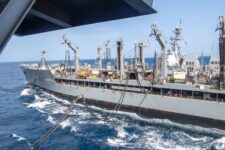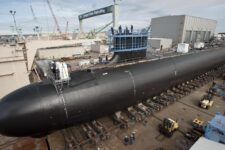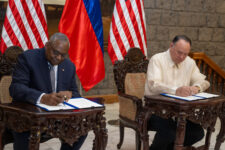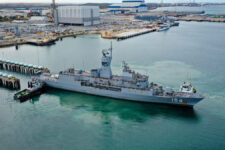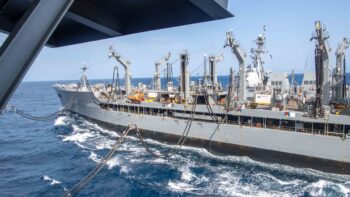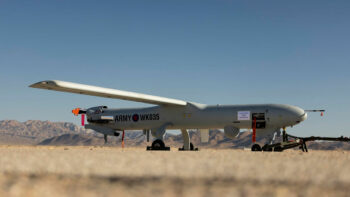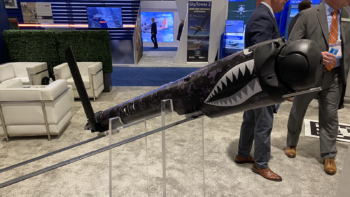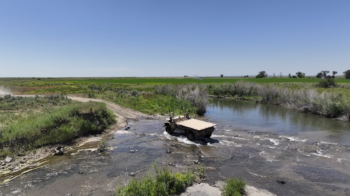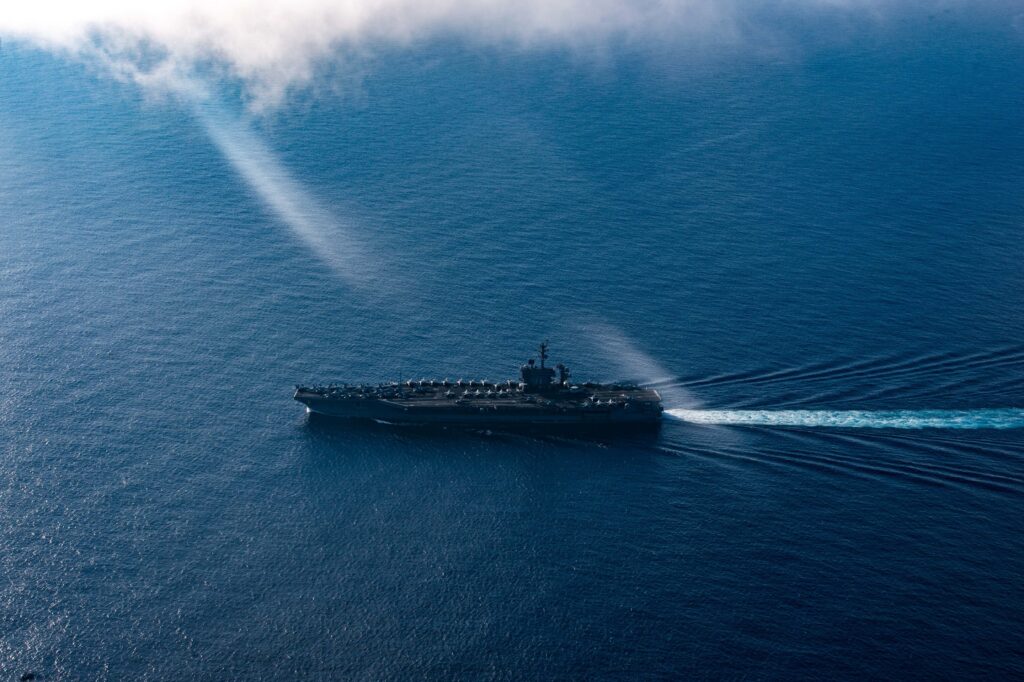
USS Theodore Roosevelt transits the Pacific Ocean March 1, 2020.
WASHINGTON: Two prominent senators and a top Pentagon official have come out in support of a new fund aimed at boosting the Indo-Pacific command’s logistic, training, and missile-defense missions. The Pacific initiative will have to contend with the federal government’s massive COVID-19 response and an exploding federal debt, however, some of which may be countered by the increasingly acrimonious relations with China.
The idea of a funding package that would build training ranges across the Pacific and beef up missile defense systems in Guam and Hawaii was proposed in April by Indo-Pacom commander Adm. Philip Davidson, who sent a plan to Congress for $20 billion in funding between 2021 and 2026 to bulk up the US presence in the region.
The plan received some bipartisan support on Capitol Hill, and will now find its way into the debate hammering out the 2021 budget markup this summer, Sen. Jim Inhofe, chairman of the Senate Armed Services Committee said Thursday. In a joint op-ed with the top Democrat on the committee Sen. Jack Reed, the duo wrote that “with the stakes so high, the time for action is now. That’s why this year we intend to establish a Pacific Deterrence Initiative in the National Defense Authorization Act for Fiscal Year 2021.”
The fund will “focus resources on key military capabilities to deter China. The initiative will also reassure U.S. allies and partners, and send a strong signal to the Chinese Communist Party that the American people are committed to defending U.S. interests in the Indo-Pacific.”
In a Thursday video conference hosted by the Center for Strategic and Budgetary Assessments, Heino Klinck, deputy assistant Secretary for East Asia said he also supports the idea, while acknowledging that “it’ll be a slog” to get the enhanced funding through Congress while so many other funding priorities are competing for federal dollars.
“Obviously, when the National Defense Strategy came out it very clearly stated that the priority theater is for us the Indo-Pacific,” he said. “But all of us also recognize that strategy is budget and budget is strategy, and the budget numbers have not supported, to date, the Indo Pacific’s role as the primary theater.”
Part of the reason for that has been the Trump administration’s inability to extricate itself from ongoing wars in the Middle East, including the fight against ISIS and ongoing tensions with Iran that led to thousands more US troops, aircraft, and aircraft carriers heading to the Middle East over the past year.
There have been some signs that the Pentagon is looking to shift focus, however.
On Thursday, the USS Mustin destroyer sailed within 12 nautical miles of Woody Island in the Paracel Island chain, where China maintains an airfield although the island is claimed by two other countries and has landed bomber aircraft in the past.
The Mustin’s pass by was the third time in the past month that American ships have challenged Chinese claims to the Paracel and Spratly islands, and the third since March.
US B-1 bombers have also flown over the South China Sea recently, and earlier this month, two Navy ships sailed into the middle of a simmering dispute between China and Malaysia in the South China Sea, while being trailed by a shadowing Chinese warship.
The Littoral Combat Ship USS Montgomery and supply ship USNS Cesar Chavez sailed close to a Malaysian drillship, the West Capella, a signal to Chinese warships who spent weeks harassing the vessel in international waters illegally claimed by Beijing.
These and “other organic decisions that have come out of the [Pentagon] have demonstrated that we’re putting more and more resources into the Indo-Pacific,” Klinck said.
“I think the president’s intent of reducing our footprint in the Middle East and in Central Asia will also lead to additional resources being available for the Indo-Pacific,” he added, “so I think the trend lines are positive, but it will be a slog particularly now in this COVID environment as resources are even tighter.”
Davidson’s original proposal called for $1.6 billion in the fiscal 2021 budget submitted earlier this year, and $18.4 billion between 2022 and 2026.
The biggest funding recommendation is $5.2 billion over the five-year projection for investments in 360-degree air and missile defense systems, long-range precision fires, and ground- and space-based radars. Davidson also identified as “my number one unfunded priority,” the Homeland Defense System-Guam.
It’s not clear what the overall contours of the Inhofe-Reed plan might be, but they suggest it will have “the aim of injecting uncertainty and risk into Beijing’s calculus, leaving just one conclusion: ‘Not today. You, militarily, cannot win it, so don’t even try it.’”
House Armed Services Committee leaders have also expressed bipartisan support for the idea, with chairman Adam Smith publicly backing the idea, though he hasn’t disclosed any detailed plans. Ranking member Mac Thornberry has suggested finding $6 billion in the 2021 budget on things like air and missile defense systems and new military construction in partner countries.
That kind of new spending would likely face an uphill battle finding approval across parties and committees with their own priorities, and with flat budget projections going forward, money will be tighter than in previous years.
Navy to sideline support ships, re-assign mariner crews amid worsening workforce shortages
Rear Adm. Philip Sobeck, commander of Military Sealift Command, said the initial plans would be executed by the end of 2026.
